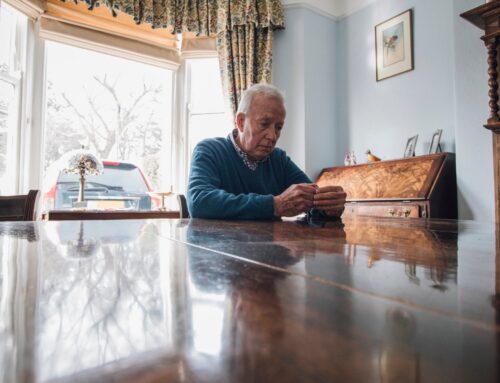Don’t miss out on arts opportunities because you can’t see well
The Kentucky Center becomes first performing arts venue to employ Indoor Explorer technology to aid patrons
The Kentucky Center for the Performing Arts has a long, award-winning history of improving arts access for people with disabilities. Adding to the effort to ensure the arts are available to everyone, The Kentucky Center is now the first performing arts venue in the United States to employ Indoor Explorer technology to assist visitors who are visually disabled.
The “Indoor Explorer” app, developed by the American Printing House for the Blind (APH), based in Louisville, presents a groundbreaking opportunity that advances access to the arts for those who are blind or have low vision.
APH has taken advantage of Bluetooth beacon technology with the app for use on iOS devices. Once visitors to The Kentucky Center download the app, they can easily navigate every aspect of the venue from the entrance, to the box office, the restrooms, and, of course, the performance theaters. The Kentucky Center’s volunteer staff will be prepared to help patrons to their seats.
“The Kentucky Center has a groundbreaking history in inclusivity and accessibility so that everyone can enjoy the arts,” said Kim Baker, President of The Kentucky Center. “This technology, provided by the American Printing House for the Blind, is revolutionary because it will literally open doors and present new opportunities for our guests with a visual disability.”
The technology was first employed for the PNC Broadway in Louisville musical “Chicago,” at The Kentucky Center, in late January.
“Indoor Explorer” makes use of beacons and indoor information stored in the OpenStreetMap® database. There are 23 beacons are currently located throughout The Kentucky Center. The beacons were installed during the fall of 2017 in designated spots. When used, the app looks up the beacon’s latitude, longitude and floor number. It also looks up points of interest on that same floor and reports their name, distance and position as users move and navigate their way through the building. It also allows users to use the GeoBeam or Compass feature to point the device to locations inside the building. When using the app indoors, the compass, in addition to reporting the direction, names all the building features in that direction.
“The arts are an experience of all the senses and the heart, and they are enjoyed by many people with visual impairments,” said Craig Meador, president of APH. “By adding Indoor Explorer wayfinding to their already robust array of accessibility services, the Kentucky Center is affirming that the arts belong to everyone, and that no one should ever be excluded from the artistic experience.”
“Indoor Explorer” takes advantage of small beacons that periodically transmit brief bursts of data. The app can correlate each beacon’s identification with information about its precise location. “Indoor Explorer” uses this information along with the signal strength of the beacon and any other beacons that may be in the vicinity to help determine your location. Once the app has a location, it can access points of interest (POIs) such as ticket counter, restaurants, security, bathrooms and specific theater entrances.
The technology was developed by APH, who worked closely with The Kentucky Center as well as its access services team. Partial financial support for the installation of the new technology in The Kentucky Center was provided by the James Graham Brown Foundation.
The free app can be found in the App store by searching “Nearby Explorer”.





